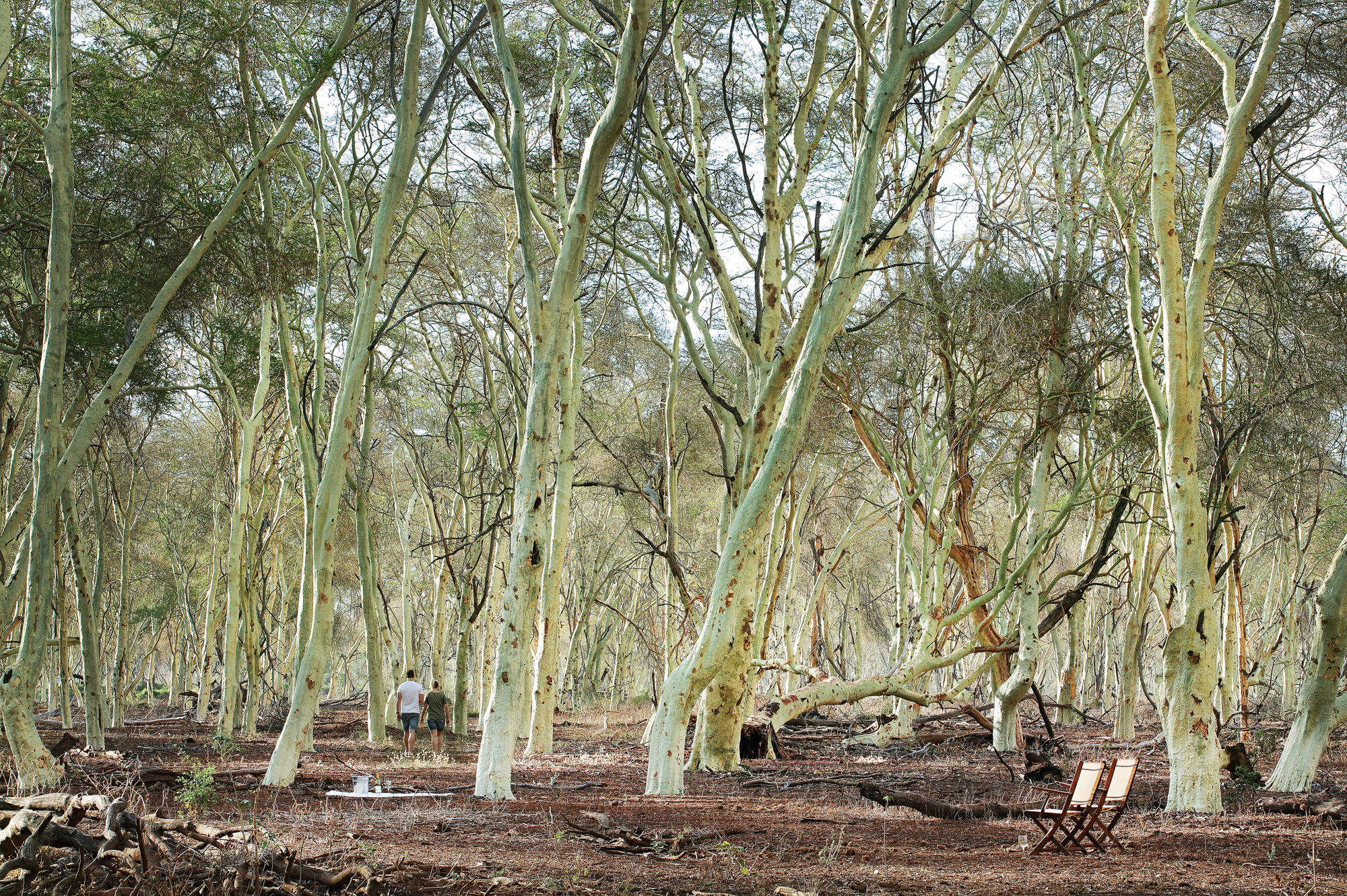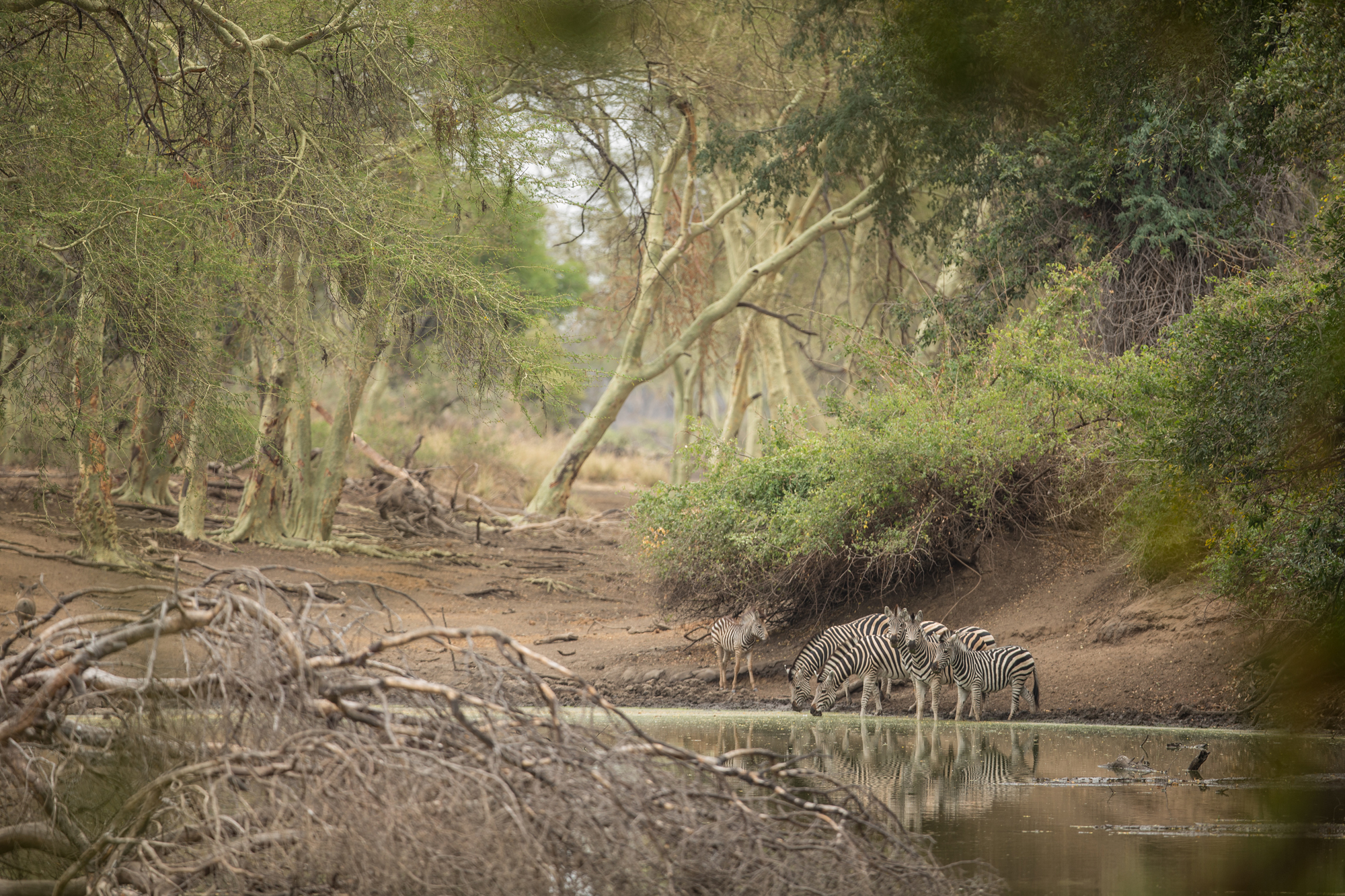The Outpost Lodge and Pel’s Post lie in the Makuleke Contractual Park, a vast and remote wilderness in the far north of the Kruger National Park. The region is home to the largest fever tree forest in the Southern Hemisphere, with thousands of yellowish-green fever trees extending as if without end into the distance. Read on to find out a little more about this magical part of the world.
THE BEAUTIFUL FEVER TREE
The distinctive form and striking colours of the fever tree make it easily identifiable in the wild. The tree can be recognised by its trunk which is straight, smooth, an unusual lime green colour and covered with a fine yellow dust. The bark of the trunk and branches is flaky and tends to peel off in paper thin layers.
It can also be recognized by its sparse, rounded, spreading canopy. The branches are covered in straight, white thorns and feathery green leaves, which create a dappled shade effect on the forest floor. During September to November the trees bear beautifully scented, bright yellow flower balls followed by flat, brown pods in the late summer.
Fever trees are usually found growing on river banks, swampy areas or flood plains in eastern and southern Africa – starting from up north in Kenya and stretching along Africa’s eastern coast all the way down to South Africa.
PICNICKING in the dappled light
We are incredibly lucky to be able to enjoy the largest fever tree forest in the Southern Hemishere and many of our guests here at The Outpost Lodge or Pel’s Post spend hours soaking up the experience whilst sharing a gourmet picnic and sipping on a G&T or two.
interesting FACTS ABOUT FEVER TREES
-
Many animals turn to the fever tree for sustenance. Baboons, monkeys and bush babies enjoy the tree’s nutritious gum while giraffes and monkeys eat the pods. Elephants tuck into the young branches and leaves, and birds, butterflies and bees are attracted to the flowers.
-
The fever tree’s scientific name is ‘Vachellia xanthophloea’. The name comes from Greek origins and refers to the tree’s distinctive bark – ‘xanthos’ means yellow and ‘phloios’ means bark.
-
Photosynthesis is usually carried out by the chlorophyll in plant leaves. However, the fever tree is the only tree species on earth whose bark performs the process instead of its leaves.
-
Fever trees grow incredibly fast – they can reach a height of 15m to 25m and grow approximately 1.5m in height annually. They will kill off their lower branches in order to maximize the nutrition they get from the soil so that they can grow as tall as possible, this is known as sacrificial branching.
-
The trunks and branches of fever trees are often used as fencing to keep hippos away from cultivated land.
-
Today, the bark of the fever tree is often used for treating eye infections and fevers, and quinine extracted from the bark is used to treat malaria.
-
Fever trees have a very shallow root system, they are easily knocked over by elephants who tend to contribute to their short lifespan.
With thanks to James Bailey from Fascinating Africa for sharing his wealth of knowledge with us. For more interesting facts about Africa’s amazing wildlife, check out his website.

















